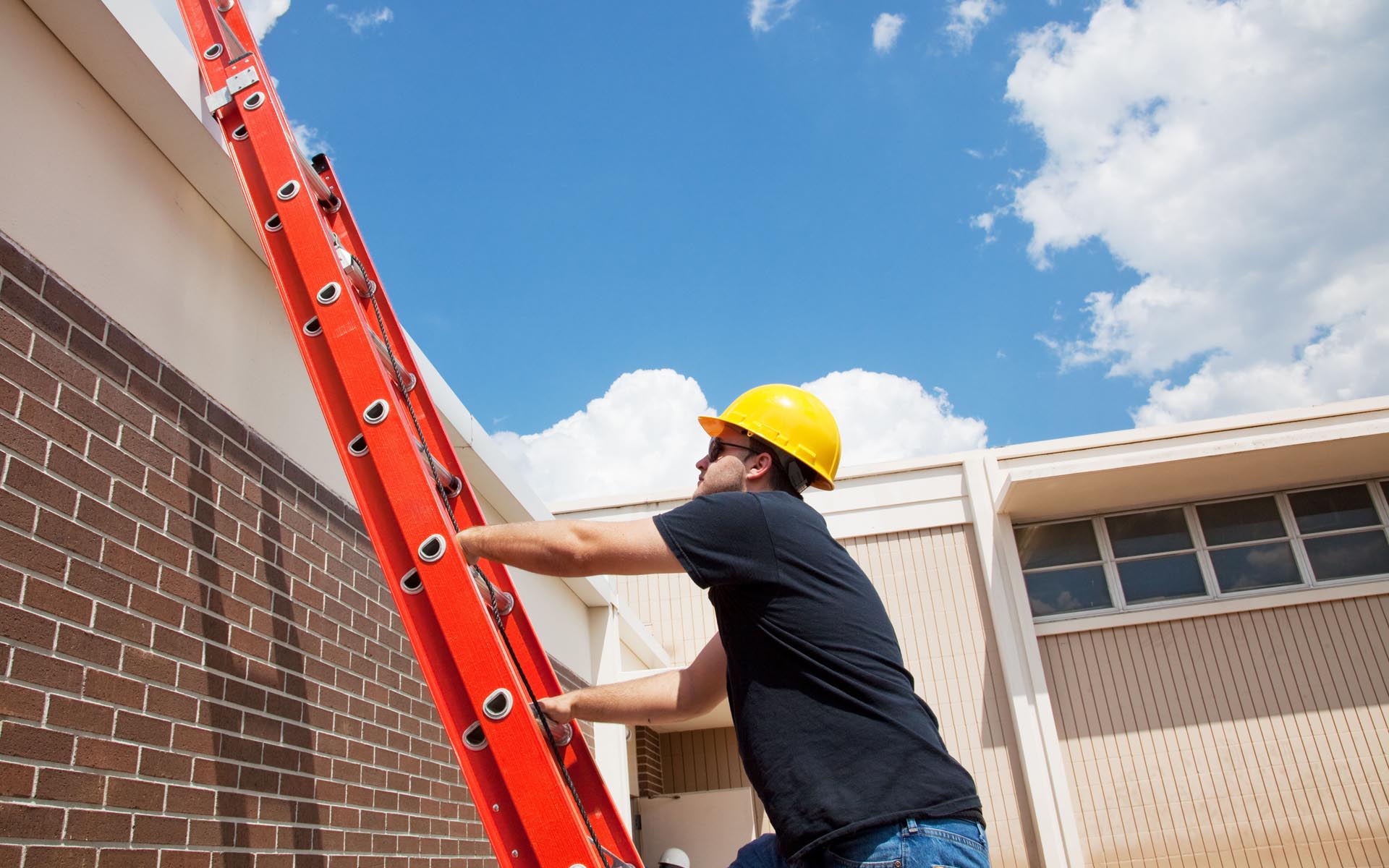
From step stools to large extension ladders, every step matters, so make sure you put the right foot forward! Ladder accidents are preventable with continuous improved ladder design and proper safety planning, training and practice. According to the American Ladder Institute, 2,000 people every day are injured in ladder-related incidents. Of those injuries, roughly 100 of them result in permanent disabilities or even fatality.
The American Ladder Institute lists the leading causes of ladder-related injuries as:
- Carrying ladders
The consistent carrying of large and heavy ladders can result in back, shoulder and knee injuries, as well as sprains and strains. - Overreaching
In lieu of climbing down and moving a ladder over a few feet, ladder users will try to stretch over the side of a ladder. Doing so can throw the person and the ladder off balance, causing a fall. - Using the wrong type of ladder
Instead of using a taller ladder, users may try standing on top of a step ladder, which is unsafe. Or, when an object that isn’t a ladder at all is used as one (such as a chair or a stack of pallets), that can also cause injury. - Using the wrong size ladder
Choosing a ladder that’s too short for the job can cause injury. For instance, roofers who opt to use a ladder that stop a foot or two short of the roofline can harm themselves when trying to transition from the ladder to the roof. - Forgetting the bottom rung
From twisted, sprained or broken ankles and knees to head injuries and fatalities, missing the bottom rung of a ladder causes a surprising number of injuries every year.
So, how can you prevent these injuries?
- Properly position the ladder to a 4:1 ratio, meaning if the surface is 4 feet off the ground, the base of the ladder should extend out 1 foot. Also ensure the ladder extends 3 feet above the surface.
- Secure ladder at the top and bottom.
- Always maintain three points of contact when using a ladder, meaning two hands and a foot or two feet and a hand.
- Keep your body within the ladder rails.
- Always face the ladder while ascending and descending.
- Do not carry objects in your hands; raise or lower them instead.
To learn more about McConkey’s Safety & Risk Management Solutions, please contact:



